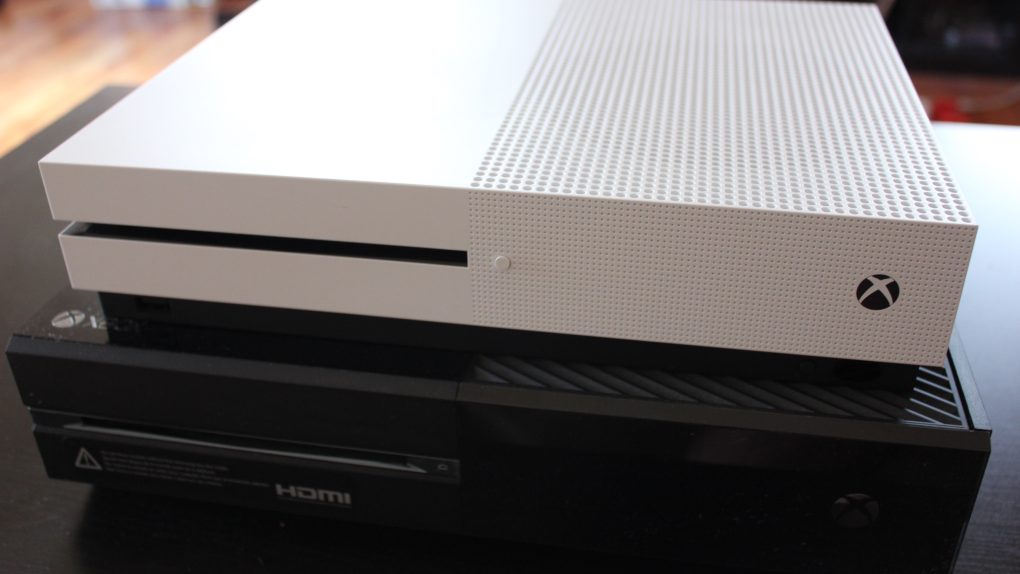As a consumer, I’ve never cared much about video game console redesigns. I had the boxy PlayStation 2 until I no longer had any use for a PlayStation 2. I still have an OG PlayStation 3 sitting in my entertainment center, complete with the backwards compatibility that the console lost post-revision.
It just never made any sense to me to buy a slimmer console that didn’t do anything that the box sitting in my living room couldn’t already do.
The Xbox One S is different. It’s a genuine upgrade.
MUST READ: Everything you need to know about Samsung’s unprecedented Galaxy Note 7 recall
Depending on storage size, the Xbox One S is available now for $299 (500GB), $349 (1TB) or $399 (2TB). It’s the first console to support 4K Ultra HD video, making it one of the more affordable 4K Blu-ray players on the market. It also features HDR support for games and video, although you’ll need an HDR10 TV rather than a Dolby Vision set (format wars are the worst, aren’t they?)
So here’s where the going gets tough. Both of those additions are meaningful and interesting, but if you don’t have a 4K TV with support for HDR10 media, you’re not getting the most out of the Xbox One S. Plus, none of the HDR games (Gears of War 4, Forza Horizon 3, etc.) are actually out yet, so we can’t say whether or not HDR gaming is really worth a $299 upgrade.
Putting aside the internal upgrades for a moment, the external enhancements are all noticeable and welcome. Microsoft has repeatedly highlighted the fact that the Xbox One S is 40% smaller than its precursor, and considering that it comfortably fits in my entertainment center now, I can assure you that this is a big deal.
Of course, the size of the console itself wasn’t the only issue with the original Xbox One design. The first model also featured a massive power brick that was nearly impossible to hide, but the Xbox One S has a built-in power supply, which means a simple power cord is enough to bring the console to life.
https://www.youtube.com/watch?v=fTSUgXkfooA
There are also a few significant changes to the way the ports and buttons are laid out on the machine. Microsoft has moved one of the three USB ports to the front of the Xbox One S, along with the pairing button (which is a true godsend). There’s also an added IR blaster for those of you who want an Xbox One as the centerpiece of your living room entertainment setup (if you still exist).
Moving back inside the Xbox One S, this redesigned console is technically more powerful than the original. I say technically because it’s not one of the key points that Microsoft highlights in press releases regarding the console, which says pretty much everything you need to know about the significance of those changes. You might see a steadier frame rate in some games, but don’t expect loading screens to fly by any faster on the Xbox One S than you do on the Xbox One.
Although it is fully compatible with the original Xbox One, the new Xbox Wireless Controller that comes packed in with the Xbox One S deserves accolades of its own. It feels better in my hands than the old Xbox One controller and it comes with Bluetooth support, which means using it for PC gaming will be easier than ever.
Despite being an upgrade, the Xbox One S is missing one important feature. If you want to connect a Kinect to your Xbox One S, you’re going to need an Xbox Kinect Adapter. Thankfully, Microsoft is providing these free of charge for customers who already own an Xbox One and a Kinect, but if this isn’t proof that the Kinect is dead, I don’t know what it’ll take to prove it.
Having spent the past week playing games, watching movies and just spending time with the Xbox One S, I find myself at a crossroads (one usually reserved for more important decisions than “should I buy this video game console?”).
There’s no question that the Xbox One S is a far more appealing piece of hardware than the Xbox One. The original console wasn’t quite an eyesore, but it was easily one of the least attractive things in my living room. And remember, I own a Wii U. But if I were considering buying an Xbox One S this year, I’d have to ask myself one question: what exactly do I need it for?
I don’t have an HDR10 television, my original Xbox One still works (and will be compatible with all the same games) and I can’t really justify spending at least $299 on something that won’t appreciably change the way I play Xbox games.
And then there’s the shadow of Project Scorpio looming over the decision, with promises of true 4K gaming and virtual reality support. Why spend money on a half upgrade now when I could save up for a full upgrade in 2017?
I can’t stress enough how great the Xbox One S is as a hardware revision. This is what the Xbox One should have looked like at launch, and it puts Microsoft even further ahead of Sony (in certain respects) than it already is. But unless you have somehow held out on buying an Xbox One for all these years and are just now looking to dive in, I’m not sure this is the time to upgrade.









